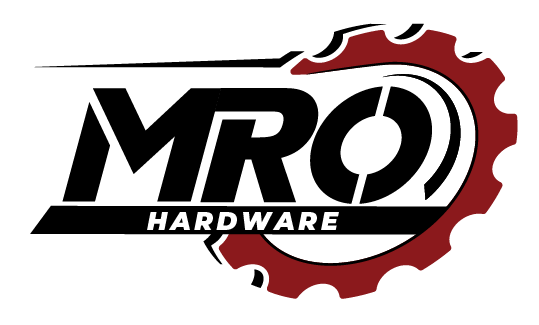When it comes to the art of riveting, two standout tools have gained significant popularity: the KingSet Riveter and the Pneumatic Riveting Tool. Both tools serve the common purpose of securely fastening materials using rivets. However, their operational mechanisms, power sources, and overall performance diverge. This enlightening article will explore the similarities and differences between these two riveting tools, shedding light on their functions, advantages, and potential drawbacks. By gaining a deeper understanding of their unique qualities, you will be better equipped to decide which tool aligns best with your specific requirements.
KingSet Riveter: The Reliable Hand-Operated Solution
Operation: The KingSet Riveter from MRO Hardware is operated by hand, requiring the user to squeeze the handles to set the rivet firmly. This simple operation makes it accessible to both professionals and DIY enthusiasts.
Portability: With its compact size and lack of external power supply, it is highly portable. It allows for riveting in remote locations or areas without access to electricity or compressed air.
Versatility: With interchangeable nosepieces, the KingSet Riveter can accommodate various rivet sizes, providing flexibility for different projects.
Control: The manual operation of the KingSet Riveter allows for precise control over the riveting process, making it suitable for delicate materials or intricate applications.
Pneumatic Riveting Tool: Power and Efficiency
Operation: It operates by harnessing compressed air to set the rivet with greater force and efficiency. By triggering the tool, the compressed air drives the rivet into place.
Speed and Efficiency: Thanks to its pneumatic power, this tool offers faster riveting speeds and higher productivity, making it ideal for large-scale or high-volume riveting.
Power Source: This tool requires a source of compressed air, typically supplied by an air compressor. This power source enables consistent and powerful riveting performance.
Strength and Durability: With its pneumatic force, this tool can deliver strong and secure rivet connections, ensuring long-lasting durability in demanding applications.
Key Differences
While the KingSet Riveter and Pneumatic Riveting Tool share the goal of fastening materials using rivets, several key differences set them apart:
Operation: The KingSet Riveter relies on manual operation, offering precise control but requiring more physical effort, while the Pneumatic Riveting Tool utilizes compressed air for effortless and efficient riveting.
Speed and Productivity: The Pneumatic Riveting Tool excels in speed and productivity due to its pneumatic power, making it suitable for high-volume projects. The KingSet Riveter, on the other hand, may be slower but offers greater control for intricate applications.
Portability: The KingSet Riveter’s manual operation allows for easy portability, making it an excellent choice for on-the-go projects or locations without access to power sources. The Pneumatic Riveting Tool requires a compressed air source, limiting its portability.
Strength: With its pneumatic force, the Pneumatic Riveting Tool delivers powerful and secure rivet connections, providing strength and durability for demanding applications. The KingSet Riveter, while offering reliable connections, may not match the same level of strength and durability as the pneumatic counterpart.
Conclusion
In summary, both the KingSet Riveter and the Pneumatic Riveting Tool from MRO Hardware have their distinct advantages and considerations. The choice between them depends on the specific requirements of your project. The KingSet Riveter offers manual control, portability, and versatility, making it suitable for smaller-scale projects or situations where power sources are limited. On the other hand, the Pneumatic Riveting Tool excels in speed, efficiency, and strength, making it a preferred option for high-volume projects and applications demanding secure and robust connections.
By understanding the similarities and differences between these two riveting tools, you can make an informed decision based on your project’s unique needs. Remember to consider factors such as project scale, desired speed, level of control, portability, and available power sources when shopping for tools from MRO Hardware.
FAQ
Which tool is better, the KingSet Riveter or the Pneumatic Riveting Tool?
Both tools have their advantages. The choice depends on your specific project requirements, considering factors such as speed, control, portability, and available power sources.
Can I use the KingSet Riveter for high-volume projects?
While the KingSet Riveter is reliable, it may not match the speed and efficiency of the Pneumatic Riveting Tool for high-volume projects.
Do I need an air compressor to use the Pneumatic Riveting Tool?
Yes, this riveting tool requires a compressed air source, typically provided by an air compressor, to operate effectively.
Which tool is more suitable for delicate materials or intricate applications?
The KingSet Riveter, with its manual control, is well-suited for delicate materials or applications that require precise handling.
Can I achieve durable connections with the KingSet Riveter?
While the KingSet Riveter provides reliable connections, the Pneumatic Riveting Tool’s pneumatic force generally delivers stronger and more durable connections in demanding applications.

